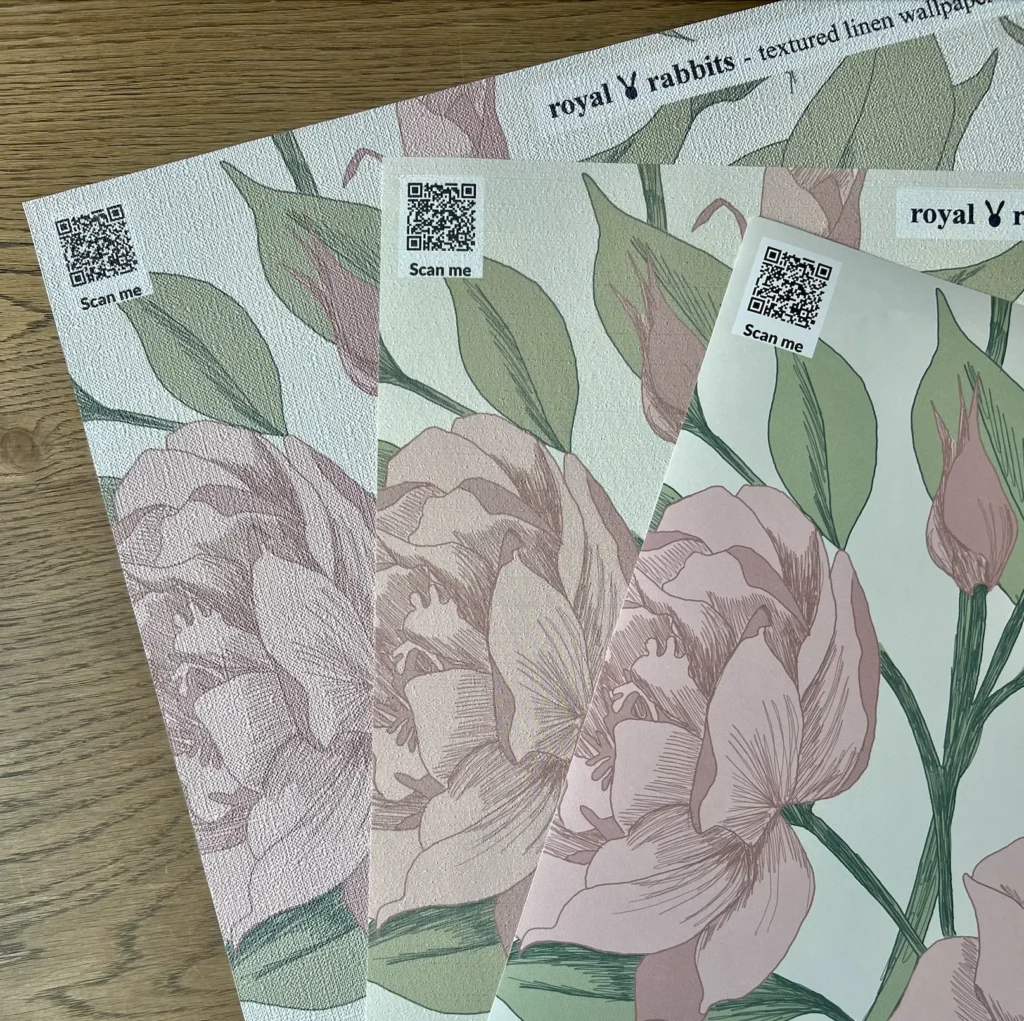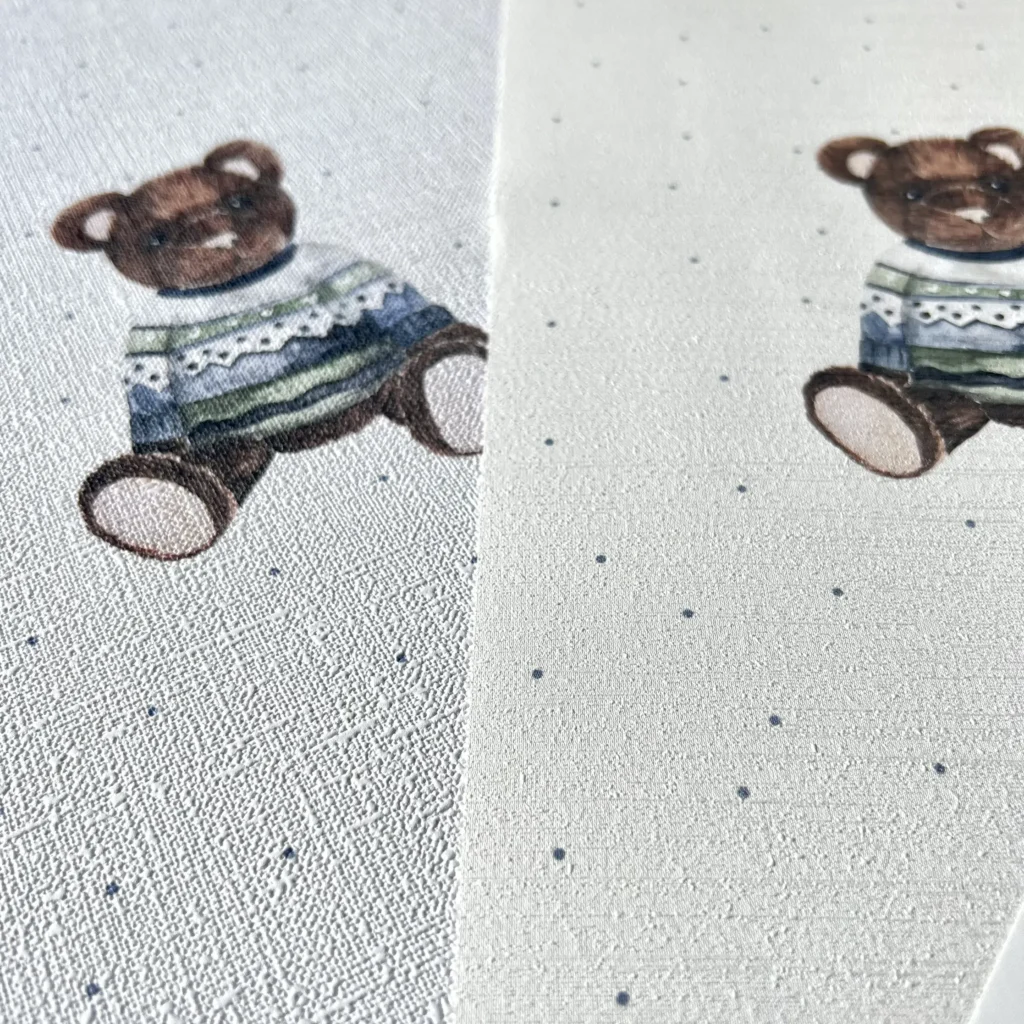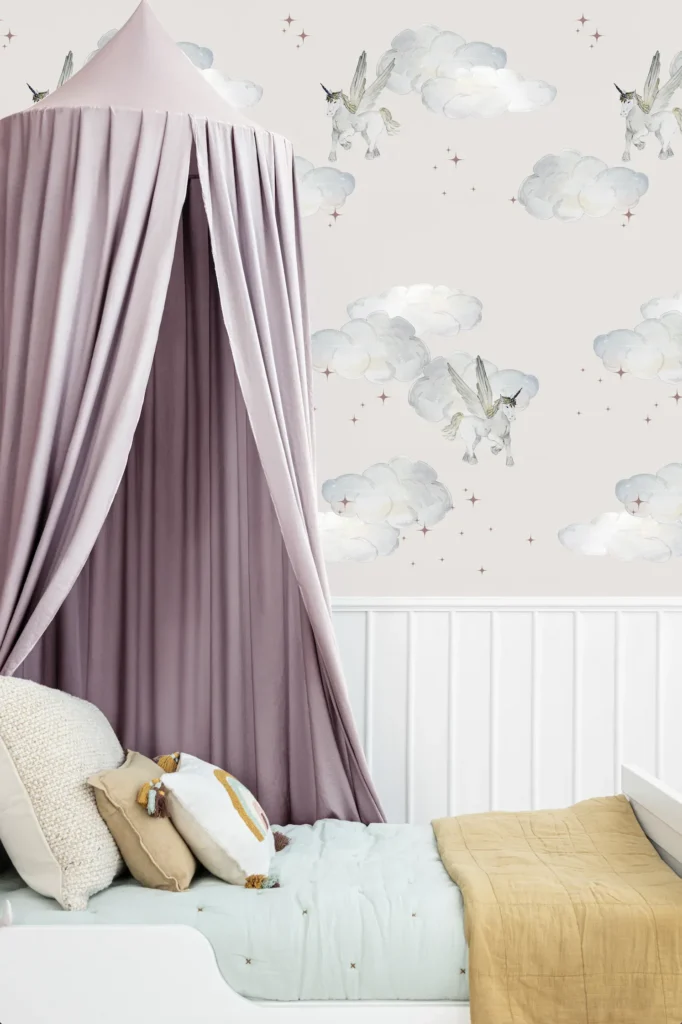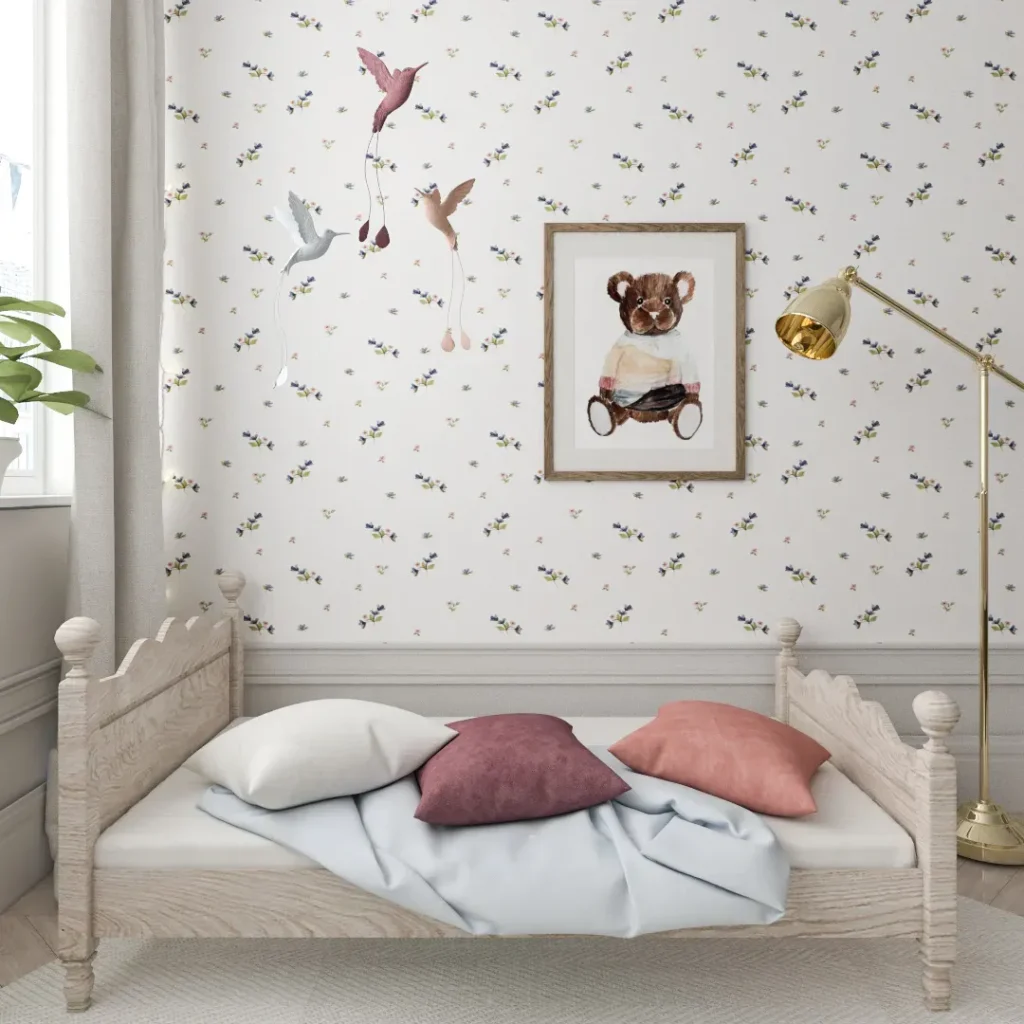Blog, A guide for you
Comparison of wallpaper materials: textured interlining on vinyl and washable wallpaper - which to choose?
Decorating a child's room is a challenging task, especially when it comes to choosing the right finishing materials. The type of wallpaper plays an important role here, affecting not only the aesthetics, but also the functionality and safety of the space. Fleece or vinyl wallpaper can determine how easy it is to keep a room clean, how long the wallpaper will last and how safe it is for your child. In this article we will compare the two most popular types of wallpaper: textured interlining on vinyl, washable interlining wallpaper. Find out which material will work best in a child's room!


Fleece or vinyl wallpaper - which type to choose for your interior?
Choosing wallpapers For your interior, it is worth combining functionality with aesthetics. Fleece or vinyl wallpaper? This is a question worth asking yourself, as each has its advantages as well as disadvantages.
Fleece wallpaper is an excellent choice for the living room, bedroom and older child's room. If you plan to self-install it is also easy to apply, as the adhesive is applied directly to the wall. Its ability to mask minor wall irregularities makes it ideal for rooms that require practical solutions.
On the other hand, for the kitchen, bathroom, or young child's room Vinyl wallpaper will be ideal. Their resistance to moisture and ease of cleaning make them an excellent choice for rooms prone to dirt. In a child's room, where the walls often become a place for a toddler's artistic experiments, traditional paper wallpaper can quickly deteriorate. In contrast, vinyl wallpaper is more resistant to scratches and stains.
Structured interlining on vinyl - vinyl wallpaper that will surprise you with its durability
Structured interlining on vinyl is a modern and very durable material that is very popular. Fleece wallpaper of this type is formed by two layers: an interlining bottom layer and a top layer made of vinyl. Vinyl wallpaper on interlining does not require specialized installation and is relatively easy to lay yourself.
Thanks to vinyl, these wallpapers can have a variety of textures and patterns, from smooth to structured. The ability to choose from a variety of colors and motifs allows vinyl wallpapers to be easily integrated into an existing interior design.

Advantages of vinyl wallpaper
- Damage resistance: Vinyl wallpaper is extremely durable and resistant to scratches and other mechanical damage, which is especially important in a children's room.
- Washability: The vinyl layer allows easy removal of dirt, which makes these vinyl wallpapers very practical.
- Sound insulation: The texture of the wallpaper can help dampen sounds, which is conducive to creating a quiet and peaceful space for the child.
Disadvantages of vinyl wallpaper
- Limited breathability: Vinyl wallpaper does not allow air to flow freely, which can lead to moisture problems indoors.
- Potential damage to walls: When removing vinyl wallpaper, there is a risk of damaging plaster or plaster. Careless use of removal tools can lead to additional wall repair costs.
Washable interlining wallpapers - a guide to advantages and applications
Washable interlining wallpapers are another solution that combines practicality and aesthetics. They are easy to apply, and their main advantage is that the surface can be cleaned without risking damage to the wallpaper.
Advantages of washable wallpaper
- Ease of application: Fleece wallpaper is easy to apply and can be easily removed if necessary, which is convenient in children's rooms where rearrangements can be frequent.
- Washability: Thanks to their washability, these wallpapers are ideal for a child's room, where dirt is a daily occurrence.
- Breathability: The interlining allows airflow, which prevents the formation of mold.
Disadvantages of washable wallpaper
- Cost: Washable interlining wallpaper can be more expensive than traditional paper wallpaper. While their price is justified by their durability and ease of installation, this can be a significant drawback for some users.
How to lay vinyl wallpaper and washable interlining?
1. wall preparation and adhesive selection
Prepare the wall by removing old wallpaper, filling holes with joint compound and cleaning the surface of dust and grease. If necessary, prime the wall to improve the adhesion of wallpaper glue.
2. applying wallpaper
Measure the height of the wall, adding a few centimeters of allowance, and cut the first strip of wallpaper. Paper wallpaper, like vinyl wallpaper, requires the application of adhesive to the wallpaper, unlike wallpaper on interlining, where the adhesive is applied to the wall. Use a level to make sure the first strip is straight, then apply the wallpaper to the wall, starting at the top. Gently press the wallpaper down, smoothing it from the inside out to remove air bubbles.
3. smoothing and blending
To match the pattern, cut successive strips of wallpaper, carefully matching the pattern on the previous strip. Then repeat the process of applying glue and sticking the wallpaper, making sure that the patterns and wallpaper strips blend perfectly.
When finishing, trim excess wallpaper near the floor and ceiling with a knife to get clean edges. Finally, use a sponge or cloth to gently remove excess adhesive.
Additional tips
- Before starting work, it's a good idea to have all the necessary tools on hand, such as a cutter, a level, a roller for smoothing and a brush for applying glue.
- Always check the manufacturer's instructions for the adhesive and the specifics of installation for a particular type of wallpaper.
Vinyl and fleece wallpaper - unique motifs and inspirations for children's room
Washable fleece wallpaper in unicorns

Ideal for introducing a fairy-tale atmosphere. Vinyl wallpaper can be used on all four walls or as an accent on one of them. Unicorn wallpaper can be paired with pastel furniture, such as beds in shades of pink or blue, and accessories in soft colors, such as soft pillows and curtains. Such decor introduces a fairy-tale atmosphere, encouraging the child to play creatively.
Washable fleece wallpaper flowers

Wallpaper in flowers is an excellent choice for arranging a child's room, giving the space a cozy and cheerful character. Fleece or vinyl wallpaper with a floral motif is also great for boho style, where it can be juxtaposed with natural materials (wood and linen). For those who want to bring a touch of nostalgia to the interior, the ideal choice is vinyl wallpaper in vintage. Floral patterns inspired by old times can transform a room into a small kingdom, perfectly matching retro-style furniture.
Summary
The choice of wallpaper for a child's room depends on many factors, such as budget, aesthetic preferences and cleaning needs. The use of wallpaper can vary depending on the backing used, which affects subtle differences in the color of the design. An additional difference between washable interlining and with structured wallpaper is its thickness. If the walls are uneven, porous or have minor problems, textured wallpaper can help mask them. If you're looking for durability and ease of maintenance, structured interlining on vinyl may be the best choice. However, if you're looking for something more budget-friendly and breathable, consider interlining or washable interlining wallpaper.
